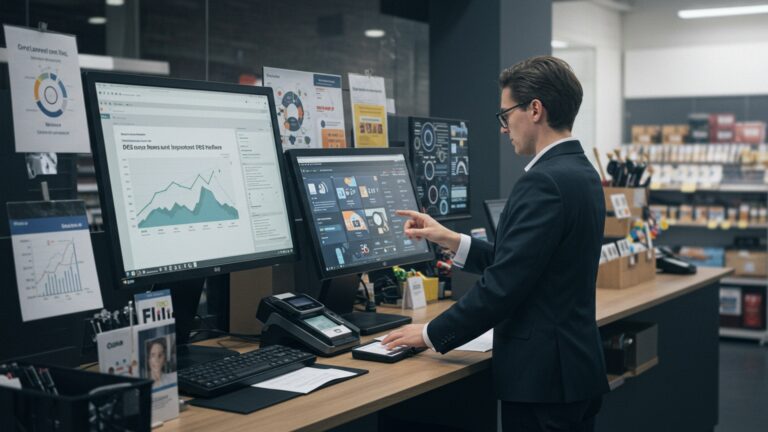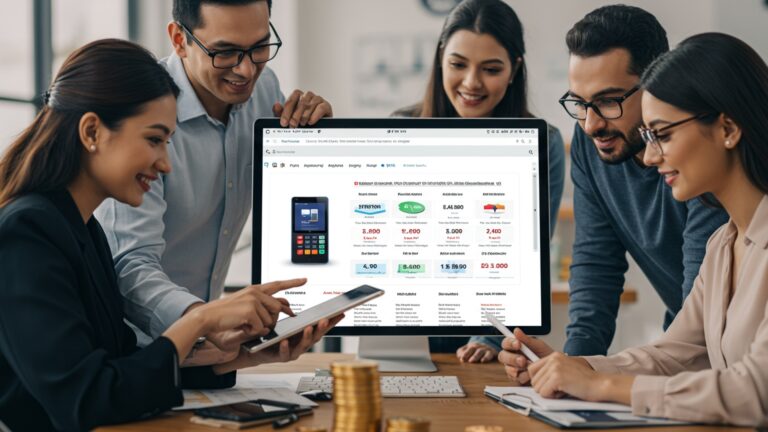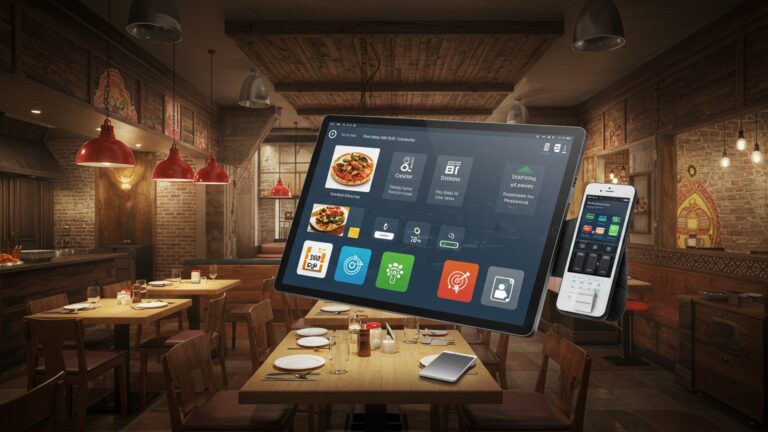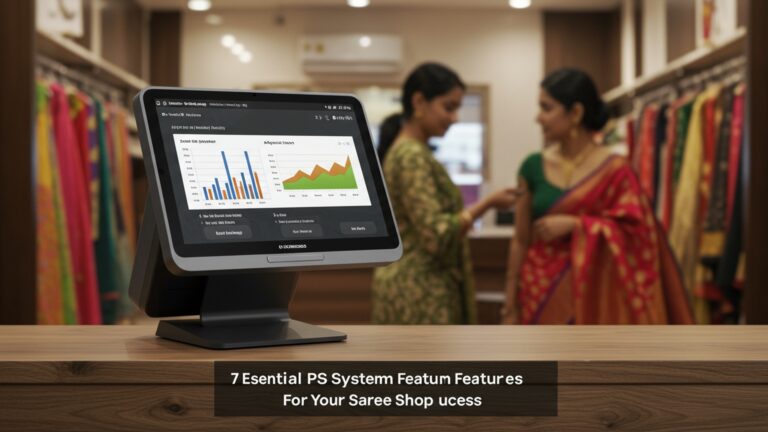7 Essential Benefits Restaurant POS Software Brings to Your Business Operations
The modern restaurant landscape demands more than just great food; it requires unparalleled operational agility and data-driven insights to thrive amidst rising costs and evolving customer expectations. Forward-thinking establishments now leverage sophisticated Restaurant POS software not merely for transaction processing. as the central nervous system for their entire enterprise. This technology, integrating everything from real-time inventory management to dynamic staff scheduling and personalized customer loyalty programs, directly addresses contemporary challenges like supply chain volatility and labor optimization. It transforms raw operational data into actionable intelligence, empowering decision-makers to enhance profitability, minimize waste. deliver a consistently superior dining experience, adapting swiftly to digital transformation trends like contactless ordering and integrated delivery platforms.

1. Streamlined Order Management and Accuracy
At the heart of any successful restaurant operation is efficient order processing. Traditional methods, often involving handwritten tickets or fragmented systems, are prone to errors, slowdowns. miscommunications, especially during peak hours. This is where modern Restaurant POS software becomes a game-changer.
A Restaurant POS (Point of Sale) system is a comprehensive software and hardware solution designed specifically for food service establishments to manage sales, orders. various other operational aspects. It integrates front-of-house (FOH) and back-of-house (BOH) functions seamlessly.
- Faster Order Taking
- Reduced Order Errors
- Real-time Kitchen Communication
Servers can input orders directly at the table using handheld devices or via intuitive touchscreens at a counter. This eliminates the need to physically walk orders to the kitchen, significantly reducing wait times. For instance, imagine a bustling Friday night at “The Urban Bistro.” Before POS, servers might spend 5-7 minutes per order walking to and from the kitchen. With a modern POS, that time is cut to seconds, allowing them to serve more tables efficiently.
Digital input minimizes misinterpretations of handwriting or verbal mistakes. Customization options, such as “no onions” or “extra sauce,” are clearly communicated to the kitchen display system (KDS). This directly impacts customer satisfaction and reduces food waste. A study by Toast found that restaurants using integrated POS systems saw a significant reduction in order errors, often leading to a 10-15% decrease in food waste from incorrect orders.
Orders are instantly sent to the KDS, displaying necessary details for chefs and expeditors. Different courses can be timed accurately, ensuring dishes are prepared and served together, enhancing the dining experience.
Consider a scenario where a large party places a complex order. A robust Restaurant POS software allows servers to add modifiers, split checks. send specific instructions to the kitchen instantly. This level of precision and speed is virtually impossible to achieve consistently with manual processes.
2. Enhanced Customer Experience and Loyalty
In today’s competitive culinary landscape, providing an exceptional customer experience is paramount. Restaurant POS software empowers businesses to move beyond transactional interactions and build lasting relationships with their patrons.
- Personalized Service
- Loyalty Programs and Rewards
- Faster Checkout and Payment Options
- Improved Order Accuracy for Takeout/Delivery
Modern POS systems can store customer preferences and order history. When a returning guest dines, servers can access this data to offer personalized recommendations or recall their favorite drink. This creates a memorable and appreciated dining experience. “We’ve seen our regular customers feel truly valued when their server remembers their usual order, all thanks to our POS’s CRM capabilities,” shares Maria, owner of “Maria’s Kitchen.”
Integrated loyalty programs are a hallmark of advanced POS systems. Customers can earn points for purchases, redeem rewards. receive special offers directly through the system. This encourages repeat business and fosters a sense of community around your brand. For example, a customer might earn 1 point for every $1 spent, with 100 points equating to a free dessert. The POS automatically tracks and applies these rewards.
Quick and seamless payment processing is crucial. POS systems support various payment methods, including credit/debit cards, mobile payments (e. g. , Apple Pay, Google Pay). even contactless options. This convenience reduces wait times and improves overall satisfaction. Some systems even allow guests to pay at the table via QR codes, further streamlining the process.
For restaurants offering off-premise dining, POS software integrates with online ordering platforms and delivery services, ensuring that takeout and delivery orders are accurately received, prepared. dispatched, minimizing errors and customer frustration.
3. Optimized Inventory Management and Cost Control
Food costs are one of the most significant expenses for any restaurant. Inefficient inventory management can lead to substantial waste and reduced profitability. This is where the power of Restaurant POS software truly shines in controlling costs.
- Real-time Inventory Tracking
- Reduced Waste and Spoilage
- Automated Reordering and Vendor Management
- Recipe Management and Portion Control
- Identifying High-Cost, Low-Profit Items
Every ingredient used in a dish, from a single olive to a pound of steak, is tracked as it’s sold. The POS system automatically deducts items from your inventory as orders are processed. This provides an accurate, up-to-the-minute view of stock levels, eliminating the guesswork of manual counts.
By knowing exactly what’s on hand, managers can make informed purchasing decisions, ordering only what’s needed. This drastically reduces spoilage of perishable goods. “Before our POS, we often over-ordered fresh produce, leading to significant waste. Now, we know exactly how much lettuce we go through daily,” notes Chef David, owner of “Green Bites Cafe.”
Many advanced POS systems can be configured to automatically generate purchase orders when stock levels fall below a predetermined threshold. Some even integrate directly with supplier systems, streamlining the entire procurement process and potentially securing better pricing.
The software can store precise recipes and their associated ingredient costs. This helps in standardizing portion sizes, ensuring consistency in food cost per dish. preventing over-portioning, which can quickly erode profit margins.
By analyzing sales data against ingredient costs, the POS can highlight menu items that are expensive to produce but don’t sell well, or those that have low-profit margins. This insight is invaluable for menu engineering and pricing strategies.
Consider the difference: a traditional restaurant might conduct a weekly inventory count that takes hours, during which time stock levels have already changed. A POS-enabled restaurant has an always-on inventory system, allowing for nimble adjustments and proactive cost management.
4. Data-Driven Decision Making and Business Insights
One of the most powerful benefits of Restaurant POS software is its ability to transform raw operational data into actionable business intelligence. Without a robust POS, understanding your business’s true performance can feel like navigating in the dark.
- Comprehensive Sales Reporting
- Employee Performance Tracking
- Menu Optimization
- Trend Analysis
- Financial Integration
POS systems generate detailed reports on sales performance, broken down by hour, day, week, month, server, menu item, or even specific promotions. This allows owners to identify peak hours, best-selling dishes. underperforming items.
Managers can monitor individual server sales, average check size. tip percentages. This data can be used for performance reviews, incentive programs. identifying training needs. For example, if a server consistently has lower average check sizes, it might indicate a need for upselling training.
By analyzing sales data, restaurants can identify their most profitable and popular dishes. This insights is crucial for optimizing the menu, removing unpopular items, or strategically pricing new offerings. “Our POS data showed that a specific appetizer was consistently selling poorly. We replaced it with a new item that quickly became a bestseller, directly impacting our revenue,” says Sarah, marketing manager for “The Gourmet Grill.”
Over time, POS data can reveal seasonal trends, the impact of marketing campaigns, or even the effect of local events on sales. Understanding these trends allows for better forecasting, staffing. inventory planning.
Many POS systems integrate with accounting software (like QuickBooks or Xero), streamlining financial reporting, payroll processing. tax preparation, reducing administrative burdens and improving accuracy.
Here’s a simplified view of how data can inform decisions:
| Data Point from POS | Insight | Actionable Takeaway |
|---|---|---|
| High sales on Tuesday lunch | Indicates strong demand | Consider increasing staff or running a special on Tuesdays. |
| Low sales of “Signature Pasta” | Dish is unpopular or overpriced | Review recipe, adjust pricing, or remove from menu. |
| Server X has highest average check | Excellent upselling skills | Recognize Server X, have them train other staff. |
5. Increased Operational Efficiency and Productivity
Automation and integration are hallmarks of modern Restaurant POS software, translating directly into significant gains in efficiency and overall productivity for the entire operation.
- Automated Tasks
- Faster Table Turnovers
- Reduced Training Time
- Streamlined Workflow
- Remote Management Capabilities
Many routine tasks that once consumed valuable staff time are automated. This includes order routing, inventory updates, sales reporting. even end-of-day reconciliation. For instance, the system automatically calculates daily sales totals and tips, drastically cutting down on manual accounting errors and time.
With quick order taking, efficient kitchen communication via KDS. swift payment processing, tables can be turned over faster. This means more customers can be served in the same amount of time, directly increasing revenue potential, especially in high-volume establishments.
Modern POS interfaces are often intuitive and user-friendly, resembling common tablet apps. This significantly reduces the training time required for new staff members, allowing them to become productive much faster. Many systems offer visual menus, making it easy for new servers to find items quickly.
The integrated nature of POS software ensures that all departments – front-of-house, kitchen, bar. management – operate from a single source of truth. This minimizes miscommunication, reduces bottlenecks. ensures a smoother overall workflow.
Many cloud-based Restaurant POS software solutions allow owners and managers to monitor sales, inventory. employee performance remotely from any internet-connected device. This flexibility is invaluable for busy owners who can’t always be on-site.
Imagine a scenario at “The Daily Grind,” a busy coffee shop. Before POS, baristas had to manually write down custom orders, calculate totals. process cash or card payments separately. With an integrated POS, they select items on a touchscreen, customizations are added, the total is calculated instantly. payment is processed with a tap. This not only speeds up service but also frees up staff to focus on crafting quality beverages and interacting with customers.
6. Robust Security and Compliance
In an age of increasing cyber threats and strict regulatory requirements, the security of customer data and financial transactions is non-negotiable. Restaurant POS software provides a fortified solution compared to antiquated systems.
- PCI DSS Compliance
- Fraud Prevention
- User Access Control
- Secure Data Storage
- Audit Trails
Most reputable Restaurant POS software providers ensure their systems are Payment Card Industry Data Security Standard (PCI DSS) compliant. This means they adhere to a set of security standards designed to protect cardholder data during and after transactions, significantly reducing the risk of data breaches.
Modern POS systems incorporate features like EMV chip card readers and tokenization, which encrypt sensitive payment insights, making it virtually useless to fraudsters if intercepted. This protects both the business and its customers from credit card fraud.
Managers can set specific permission levels for different staff roles. For example, servers might only have access to order entry and payment processing, while only managers can perform voids, issue refunds, or access sensitive reports. This prevents unauthorized actions and reduces internal theft.
Cloud-based POS systems typically store data in secure, encrypted servers with regular backups, protecting against data loss due to hardware failure, natural disasters, or local security breaches.
Every transaction and action performed within the POS system is logged, creating a comprehensive audit trail. This is invaluable for tracking discrepancies, investigating issues. ensuring accountability.
For example, if a void transaction occurs, the POS system records who performed the void, when. often requires a manager’s override, leaving a digital footprint that can be reviewed later. This level of transparency and control is a critical safeguard for any business handling financial transactions.
7. Scalability and Future Growth Potential
As a restaurant grows, its operational needs evolve. A key advantage of modern Restaurant POS software is its inherent scalability, designed to adapt and expand alongside your business, whether you’re adding a new location or introducing new services.
- Easy Expansion to Multiple Locations
- Adaptability to New Services
- Integration with Third-Party Applications
For restaurants planning to open new branches, a cloud-based POS system simplifies the process. All locations can operate under the same centralized system, sharing menu configurations, inventory data. customer loyalty programs. This ensures brand consistency and streamlined management across the entire enterprise.
Whether you’re introducing online ordering, a new delivery service, or a catering arm, a flexible POS can integrate these new functionalities seamlessly. This avoids the need for entirely new, disparate systems, saving time and resources. Many POS providers offer modules or integrations for these specific services.
The best Restaurant POS software solutions offer robust APIs (Application Programming Interfaces) that allow them to connect with a wide ecosystem of third-party tools – from reservation systems and accounting software to marketing platforms and payroll services. This creates a powerful, interconnected operational hub.
// Example of a conceptual API call for a POS system // This isn't actual code for a specific POS. illustrates the concept. POST /api/v1/orders Host: yourposprovider. com Content-Type: application/json Authorization: Bearer YOUR_API_KEY { "customer_id": "CUST12345", "items": [ {"product_id": "PROD001", "quantity": 2}, {"product_id": "PROD005", "quantity": 1, "modifiers": ["no_onions"]} ], "payment_method": "credit_card", "total_amount": 45. 75 }
This
block illustrates how different software components might communicate with the POS, allowing for extensibility.
Reputable POS providers regularly update their software to incorporate new features, comply with evolving regulations. leverage emerging technologies. Investing in a modern system means your restaurant stays ahead of the curve without constant hardware replacements.
For multi-location businesses, a cloud-based POS provides a single dashboard to oversee all operations, allowing for centralized menu updates, pricing adjustments. performance monitoring across the entire chain. This is invaluable for maintaining consistency and efficiency as you grow.
In essence, choosing the right Restaurant POS software isn't just about solving today's problems; it's about laying a solid foundation for tomorrow's success, ensuring your business can adapt, grow. thrive in an ever-changing market.
Conclusion
Embracing restaurant POS software isn't merely about digitizing transactions; it's a strategic shift towards operational excellence and sustainable growth. We’ve explored how these systems streamline everything from inventory to customer service, transforming challenges into opportunities. My personal tip for restaurant owners is to view your POS as the central nervous system of your business, constantly feeding you actionable data. For instance, real-time sales analytics, a feature now standard in modern POS solutions, helps pinpoint best-selling dishes and optimize staffing, something I’ve seen dramatically cut waste in many establishments. Don't just settle for basic functionality. Explore integrated loyalty programs and online ordering capabilities, which are crucial in today's digital-first dining landscape. The right POS empowers you to make data-driven decisions, anticipate trends. ultimately enhance every guest interaction. It’s time to stop reacting and start proactively shaping your restaurant's success. If you're ready to make that leap, understanding how to choose the right system is your next step.
More Articles
How to Choose the Best Restaurant POS System 7 Essential Tips
5 Smart Ways Restaurant POS Software Boosts Your Business Profits
6 Ways Restaurant POS Improves Customer Service and Efficiency
Why 8 Restaurant Owners Are Upgrading Their POS Systems Now
Learn 6 Simple Steps to Master Restaurant POS Inventory Management
FAQs





